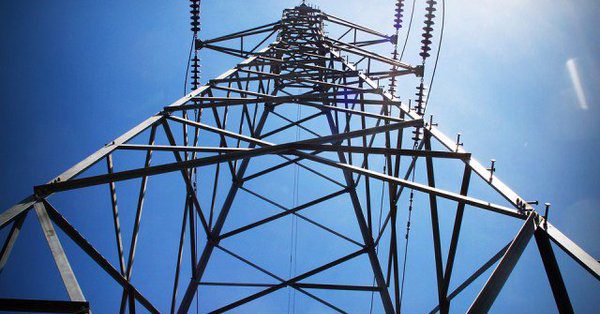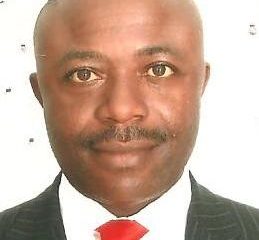Global Issues
Mozambique Hopes To Become Southern African Energy Hub -By Kestér Kenn Klomegâh
Southern African countries individually hope they could make excess power from nuclear plants available for export to neighbouring countries under the Southern African Development Community Power Pool framework arrangement. The key hindrance is the cost of producing nuclear energy and how best to deal with nuclear waste so as to maintain safe environment, the risk that it poses from poor handling and management.

Southern African Development Community (SADC) member countries have working together on strategies to find the best sustainable solution for their collective energy shortages and deficit in the region. What is currently available simply not enough for both domestic and industrial use. At least, the 16-member SADC group underscores the fact that the region lags behind in the industrialization process primarily due to lack of energy.
SADC members face one significant challenge, that is to ensure cooperation on regional energy schemes. While most of them are still scrambling to secure alternative funds for building nuclear plants proposed by Russia that might take several years to complete, Mozambique seeks to exploit its available resources to ultimately provide basic energy, improve the competitiveness of its economy and achieve universal access to electricity within the next few years.
Under Jacob Zuma, South Africa championed plans to build as many as eight reactors that would generate 9,600 megawatts of energy starting from 2023 and cost as much as US$84 billion – programme critics say the country can’t simply afford and doesn’t absolutely need. Nuclear power programme is a complex undertaking that requires meticulous planning and preparation, and large investment, specialized institutions and well-trained human resources.
The critical question is the cost for building nuclear plants. Most of the funds are needed during the construction period. Managing nuclear waste is another important aspect of nuclear plants. There is only one nuclear power plant on the entire African continent, namely, Koeberg nuclear power station in South Africa. Commissioned in 1984, Koeberg provides nearly 2,000 megawatts which is about 5% of installed electricity generation in South Africa.
Russia claims to offer finance but that is a claim that has not been demonstrated outside centrally planned economy. Three decades after the Soviet collapse, not a single nuclear plant has been completed in Africa. Nevertheless, it has signed several bilateral agreements with as many as 14 African countries including Angola, Rwanda Tanzania, Zimbabwe, Zambia and Zambia. For Rwanda, a nuclear power plant will cost not less than US$9 billion which is equivalent to its entire Gross Domestic Product.
Under the agreement that was concluded in December 2016 to build a nuclear deal worth US$10 billion for Zambia. The processes of design, feasibility study and approvals regarding the project concluded. Russia was unprepared to make financial commitment, and Zambia lacks adequate funds to finance the project.
Southern African countries individually hope they could make excess power from nuclear plants available for export to neighbouring countries under the Southern African Development Community Power Pool framework arrangement. The key hindrance is the cost of producing nuclear energy and how best to deal with nuclear waste so as to maintain safe environment, the risk that it poses from poor handling and management.
Experts have argued that the total cost of constructing nuclear plants in Angola, Rwanda Tanzania, Zimbabwe, Zambia and Zambia, that could be invested in building Grand Inga-3 hydropower project on the Congo river, and could provide the energy needs for southern Africa. Grand Inga-3 is the world’s largest proposed hydropower scheme to develop a continent-wide power system. Grand Inga-3 is expected to have an electricity-generating capacity – nearly twice as much as the 20 largest nuclear power stations.
With the dreams of building nuclear plants are far from reality, Mozambican government is fast-tracking and mobilizing more investments to build new power generating projects to meet the huge energy demand in the southern region. According to official sources, the new Mphanda Nkuwa hydroelectric located on the Zambezi River in the central province of Tete, will help to alleviate the regional energy deficit that is currently estimated at seven gigawatts.
Luis Ganje, Director of Market Operations at Mozambique’s utility company Electricidade de Mocambique (EDM), Luis Ganje, speaking October 11 in Maputo on the sidelines of the 59th General Meeting of the Southern African Power Pool (SAPP), said that a financial agreement, estimated at US$5 billion for the implementation of the Mphanda Nkuwa hydroelectric project would be reached soon. The three-day meeting gathered together 150 representatives from companies working in SADC energy sector.
The Mphanda Nkuwa hydroelectric dam is estimated to generate 2,070 megawatts for Mozambique. It will be 700 metres long and rise 86 metres above its foundations, with 13 floodgates. The construction of a 563 kilometres long new transmission power line Temane-Maputo, and implementation of the Tete-Maputo line, also known as the backbone, which will make it possible to develop integrated electricity infrastructures, will serve to support the industrialization of Mozambique and the entire southern African region.
“The energy deficit in the region is much greater than the existing capacity produced in Mozambique at the moment. Mozambique tends to become a power generation hub, not only to meet the need for universal access by 2030, but also to meet the needs of the entire region,” said Ganje, adding there are several projects underway, naturally the process takes time, but hope to provide a more robust response to regional energy needs by 2030.
Ganje further underlined the expansion of renewable energy projects currently underway that should by 2025 inject about 200 megawatts into the national electricity grid, for domestic consumption and export to the regional market. Mozambique will soon be exporting renewable energy. The Mocuba Solar plant produces for domestic consumption, but with the projects under implementation such as the Metoro plant and others in the pipeline there is hope to export energy from renewable sources soon.
According to the media release by the Mphanda Nkuwa Hydroelectric Project Implementation Office, the main objective is to ensure the coordination of actions for the implementation of the Mphanda Nkuwa project.
Location: The Mphanda Nkuwa Dam will be located in Tete Province, Centro region, on the Zambezi River, 61km downstream of the Cahora Bassa Hydroelectric Power Plant.
Project description: The Hydroelectric Power Plant will have a capacity of up to 1,500 Megawatts and an Electric Power Transmission Line from Tete to Maputo with 1,300 kilometres.
Budget: US$4.5 to US$5 billion, 60% for the construction of the dam and 40% for the power transmission line.
Strategic importance: The project will position Mozambique as an energy hub in southern Africa. It will provide lower cost energy in the country and region, contribute to universal access to energy in the country by 2030 and support rapid industrialization, with job creation, skills development and business opportunities (local content). Social and economic benefits, in the form of royalties and income on concession fees for the Mozambican state.
Environmental approach: The project will be implemented in strict compliance with national standards and internationally accepted best practices for the development of projects of this nature, to mitigate negative impacts and maximize positive aspects. In this context, the Mphanda Nkuwa Hydroelectric Project Implementation Office recently signed an agreement with the International Hydro-electricity Association for the assessment of the project’s sustainability, including training and capacity building.
Mozambique News Agency reported, citing government sources, that thee were eight international consortiums interested to become strategic partners of Mozambique in building the Mphanda Nkuwa dam, with electricity production: ETC Holdings Mauritius, Longyuan Power Overseas Investment (China), PowerChina Resources, WeBuild Group, Scatec (Norway), Sumitomo Corporation, EDF and Kansai Electric Power (Japan).



















